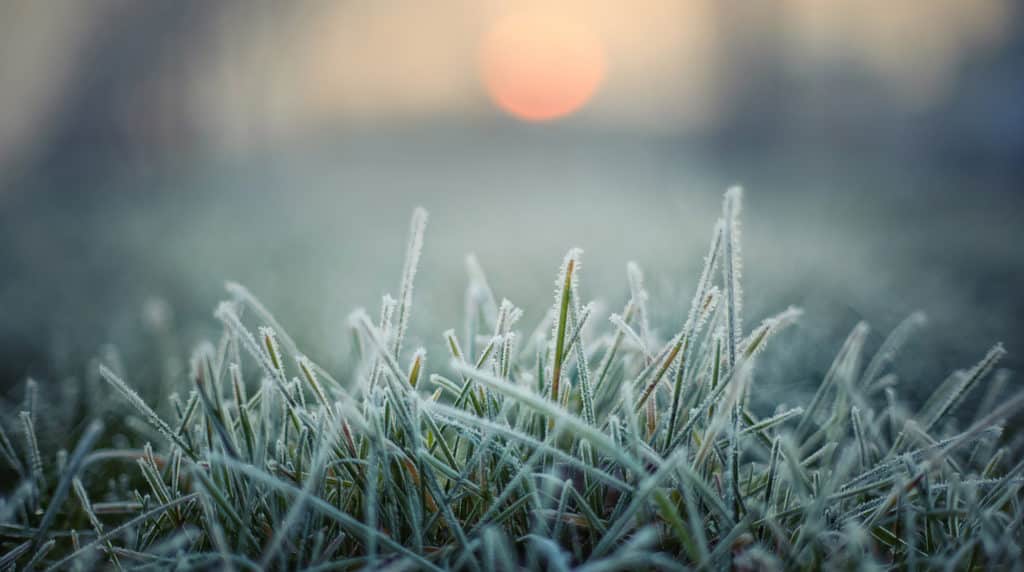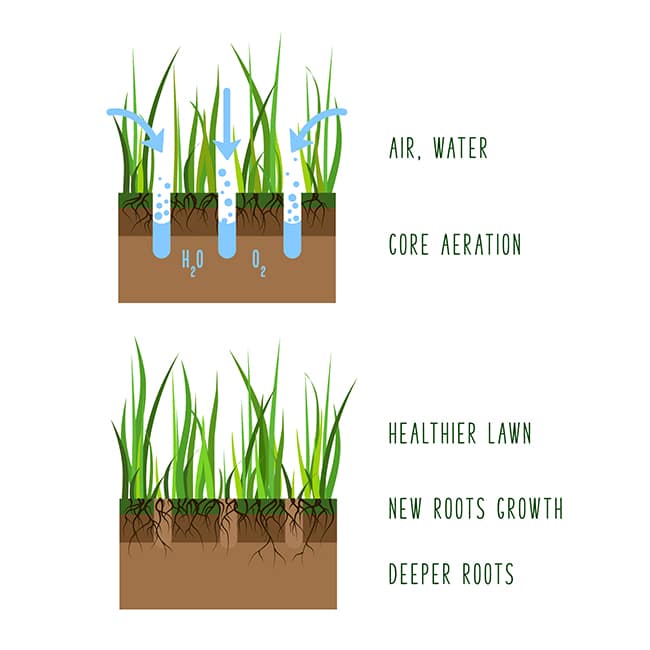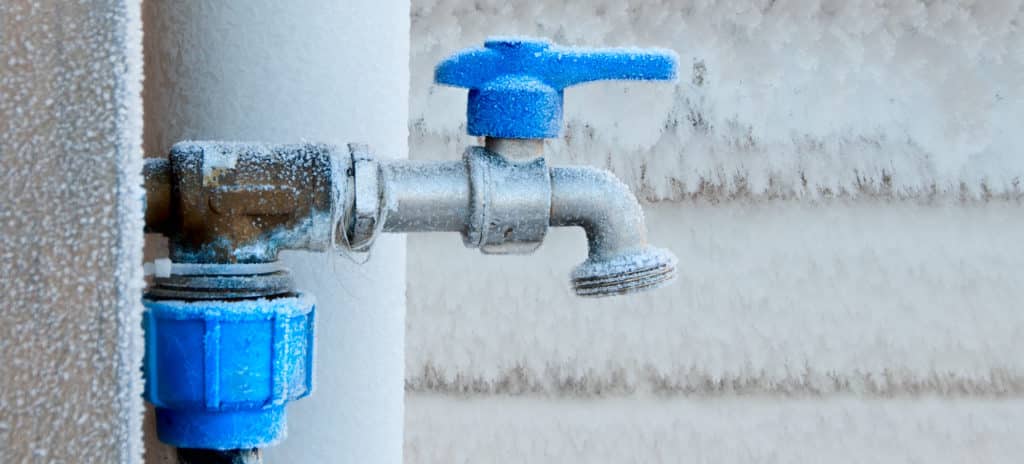
Nebraska Winters Can be Brutally Cold. Here’s How to Prepare Your Lawn.
The Fall and Winter months are the most critical seasons for your Omaha NE lawn.
Homeowners and commercial property owners alike should be thinking about next spring as they prepare their lawns for the upcoming cold Nebraska winter months.
To help you prepare your lawn from the coming frost and freezing temperatures, we’ve put together a list of fall lawn care tips that every lawn owner should know. By taking these precautionary measures, you can help give your grass the best chance possible at surviving the colder months, so that it’s lush and healthy come springtime.
Mulch Your Leaves
At EcoScapes, we recommend that you mulch up all those leaves on the ground before the first frost. Mulching the leaves and evenly dispersing them can help reduce the number of brown patches and prevent parts of your yard from falling victim to winter kill. Any leaves left on the ground can become wet and form a barrier that makes it impossible for the turf to breathe.
Instead of raking the leaves up, run over them with your lawnmower a few times until they are ground into mulch and evenly dispersed throughout the lawn. These mulched leaves can help protect your lawn from drought and wind. You can purchase a mulching blade for your lawn mower which helps to chop the leaves into very fine particles. As an added bonus, when mulched leaves decompose, they create an organic matter that is absorbed into the soil which helps feed the roots.
Don’t Stop Mowing Too Early
One of many unknown fall lawn care tips is to continue mowing, even when the cold autumn months begin rolling in. We recommend that you follow a semi-regular schedule and continue mowing until you see the growth slow.
It is good practice to keep your grass between 2 to 2.5 inches tall throughout the late autumn months. If the grass starts to grow longer than 3 inches, it may begin to mat. Once matting starts, it is possible for your lawn to start suffering from various issues, such as disease and mold. On the other hand, if you cut the grass too short, then its ability to store nutrients can be hindered.
Make Sure to Water if Needed
Although the temperatures may be cooler, it is still vitally important that you continue to water your lawn as needed. Because the grass continues to grow into the autumn months, you’ll want to sustain and encourage this growth by following a consistent watering schedule. Continue to water, as needed, until the ground begins to freeze. If you have an automatic irrigation system, avoid damage by having it winterized before it freezes.
Broadleaf Weed Control
Fall is the perfect time of year to control perennial broadleaf weeds such as clover, dandelions creeping charlie. Some of these weeds can be pulled by hand, but many are scattered throughout your lawn making manual weed control a very difficult chore. As an alternative, an efficient method of removing these weeds is to spot-treat them with an environmentally friendly broadleaf weed killer.

Aerate Once per Year
It is important to make sure that your lawn gets the air it needs in autumn and winter. Aeration is done to break up compacted turf and pull-up plugs of soil and grass. This is usually done with a gas-powered machine called an aerator. Aerator are roughly the size of a mower and are great for larger yards.
Aerating is the process of creating holes in the soil which will allow much-needed oxygen, nutrients and water to reach deeper into the soil and reach the roots. This not only helps the roots establish deeper into the soil but prevents compaction. Aeration gives your lawn the best chance at surviving the winter months.
The aerating process provides room in your lawn for seeds to sprout, and new grass to grow and spread, without competing with annoying broadleaf weeds or compacted soil.
Over seed Your Lawn in the Fall
Autumn is typically the season when the soil temperature reaches 55℉ in Omaha. Since grass roots grow extensively in the fall and winter, this is the best time to over seed your lawn.
Don’t skimp here, cheap seed often contains weed seed and annual rye grass seed. If you want a lush, green lawn come spring, it is best to spend the extra money and buy the more expensive seed, which is more likely to resist insects, disease and drought.
After you plant the seed, water it lightly several times each day until it germinates. Typically, this takes approximately 10 to 20 days.
Apply Fall Fertilizer Before the First Frost
Applying fertilizer in late fall before the first frost occurs can provide your lawn with essential nutrients that it can absorb and store for the winter. This in turn can help the grass survive the harsh winter months and encourage it to grow as the warmer temperatures of Spring begin to arrive. This should also be your last lawn treatment of the year.
Lawns that are fertilized late-season are typically the first to green up and grow in the spring. Make sure to choose a fertilizer that is high in phosphorous (10-15% is best). Or better yet an Organic product such as fish bone meal. This is crucial for healthy root growth.

Prepare Plants & Outdoor Spigots for the Freeze
As a resident of Omaha which experiences very cold winters, be sure to put away watering systems and hoses for the season. It is also important to turn off water to any outdoor spigots. You may even want to protect the spigots with insulated foam covers.
Be sure to bring any outdoor plants or flowers into your home before temperatures approach freezing protect them. This is also a good time to remove and/or cut-back plants from your flowerbeds that are no longer in season.
Conclusion
With temperatures dropping and leaves changing colors and falling, it’s not uncommon to forget about the lawn, and focus on football, staying warm, and getting through the holidays. But, if you follow just a few of the tips in this Fall lawn care guide, you’ll be giving your lawn what it needs to survive the (cold) season.





